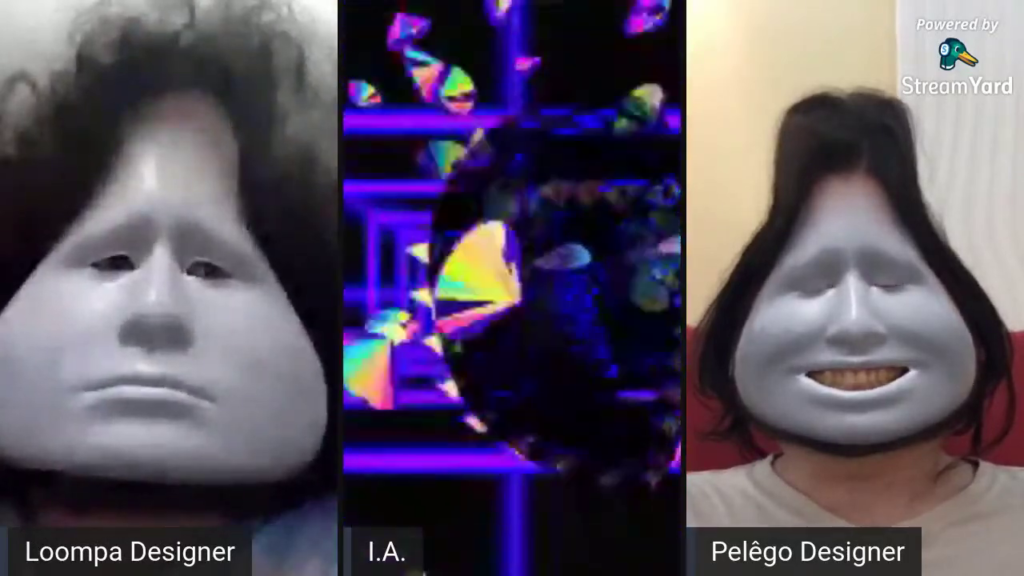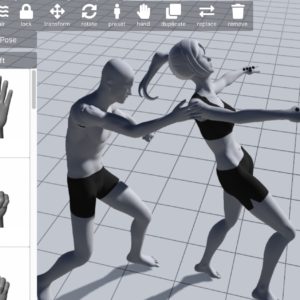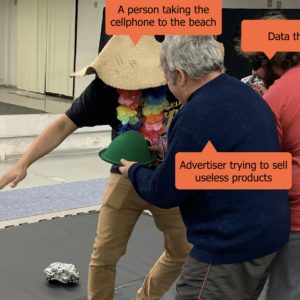The Design & Oppression network produced a remote forum theater play on platform work and precarity in the USP design academic week of 2020. Young design students joined the forum to discuss the dystopian future of their profession while considering the dystopian present of other professions. Following the remote forum theater method, the spect-actors wore augmented reality masks to express the aesthetics of the oppressed while multiplying the number of characters they could play out convincingly.
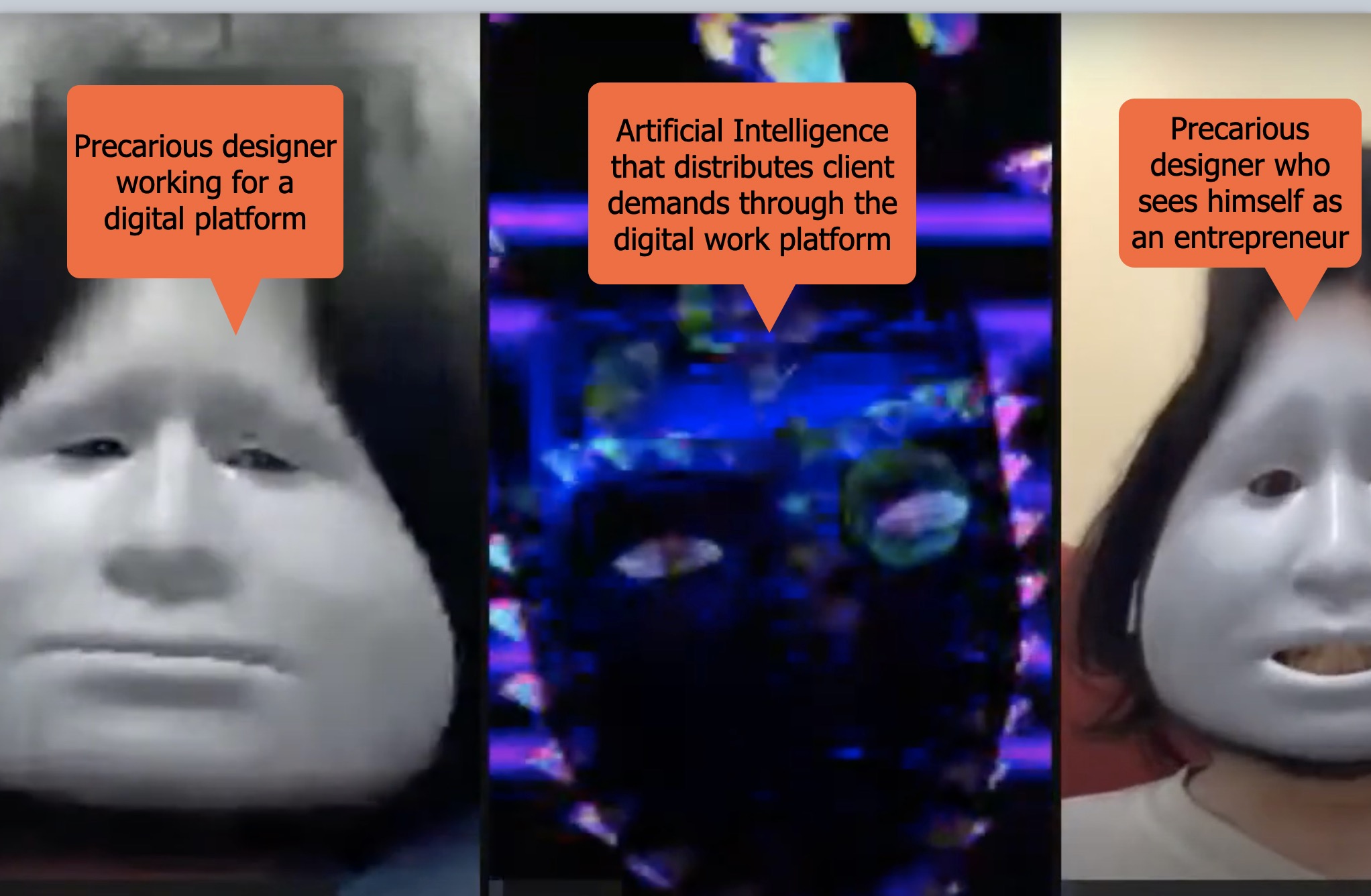
Plot summary
The plot consists of an Artificial Intelligence system that aims to design automatic visual identities for clients while hiding the human work behind its creations. There are three main characters: the artificial intelligence that leverages design work in a platform business, as Uber has done to ride-hailing, and two precarious designers working for the artificial intelligence. In addition, there are two secondary characters: the client and the metadesigner. The client orders the automated design work but does not know that an actual human is doing the work, whereas the metadesigner designs the platform to increase design work exploitation. Everything seems automated and clean at the ordering interface. However, on the backstage, the designers are trying to organize a revolt.
Forum questions
- Are designers also users?
- Are designers part of the working class?
- Are digital platforms unfair to workers?
- What is the human cost of artificial intelligence?
Cast and crew
- Frederick van Amstel, joker-director, as Client, Scab-designer, and Metadesigner
- Mateus F. L. Pelanda as Lumpen-designer
- Eduardo A. B. M. Souza as Artificial Intelligence
Full recording (with English subtitles)
Synopsis
Act I
The client wakes up with an excellent idea for the name of his slaughterhouse’s new product: Happy Cow, an organic beef steak. He needs to create a logo for the new product, picks up his cell phone, and opens an application he heard about that can design with artificial intelligence: The Fantastic Design Factory.
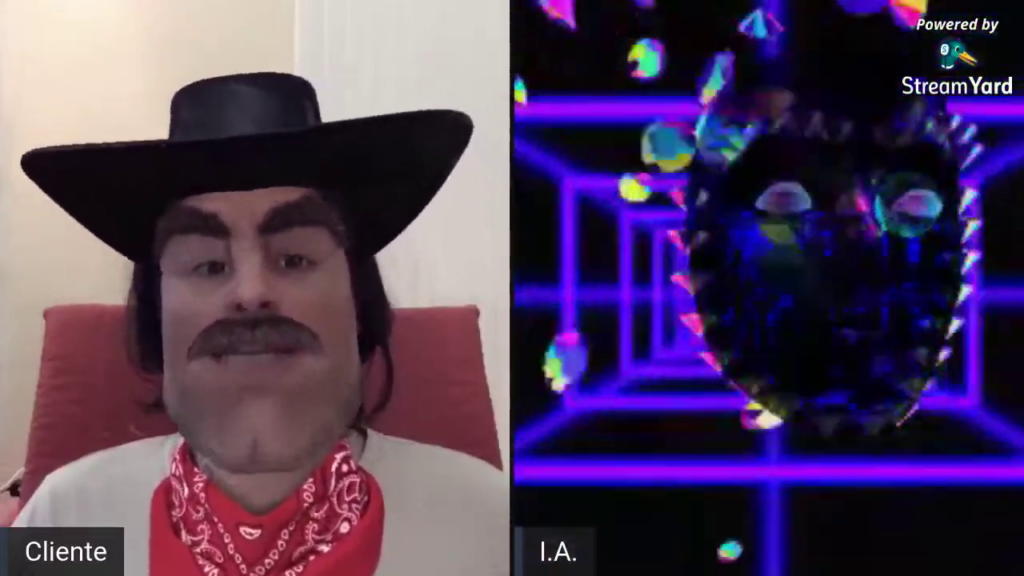
The artificial intelligence receives the client and conducts a briefing dialogue. The client’s idea is a smiling cow in the logo to win over people who are about to stop eating meat. The platform says that the artificial creation takes a while and suggests that the client watch a movie on Netflix: The Network Dilemma (2020). While the customer leaves the scene, the platform calls the lumpen-designer to perform the job. The designer is vegan but decides to take the job.
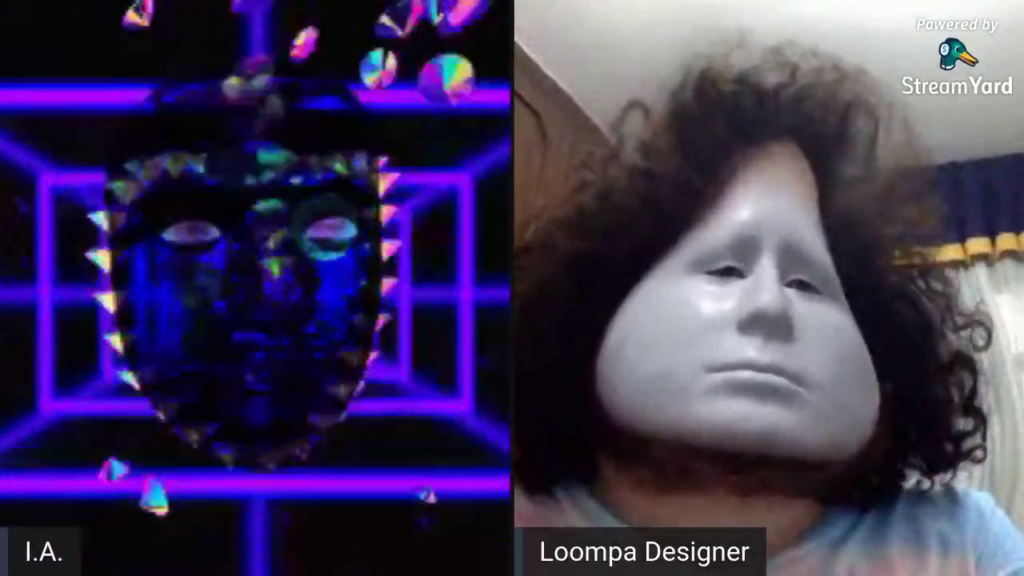
The client disapproves of the branding, and the platform says the redo is free, together with a bonus animated version of the logo. The lumpen-designer has to make another brand, which the client finally approves. When it is time for payment, the platform offers payment via PiXpay, which gives a cashback of 2 Reais. This leads to a decrease in the designer’s remuneration, which is 1 Real. The designer protests, but the platform justifies that it needs to provide discount to clients.
Act II
The AI turns to the lumpen-designer for another job, but this time he refuses to do it. The lumpen-designer tries to complain to the platform, but the platform doesn’t listen. The lumpen-designer posts his complaint in a user forum. A scab-designer reads the complaint and tries to explain how it is necessary to optimize work processes to be successful and become more entrepreneurial. The lumpen-designer proposes founding a designers’ union with fellow platform workers. The platform detects the word “union” and automatically closes the forum post. The lumpen-designer goes away.
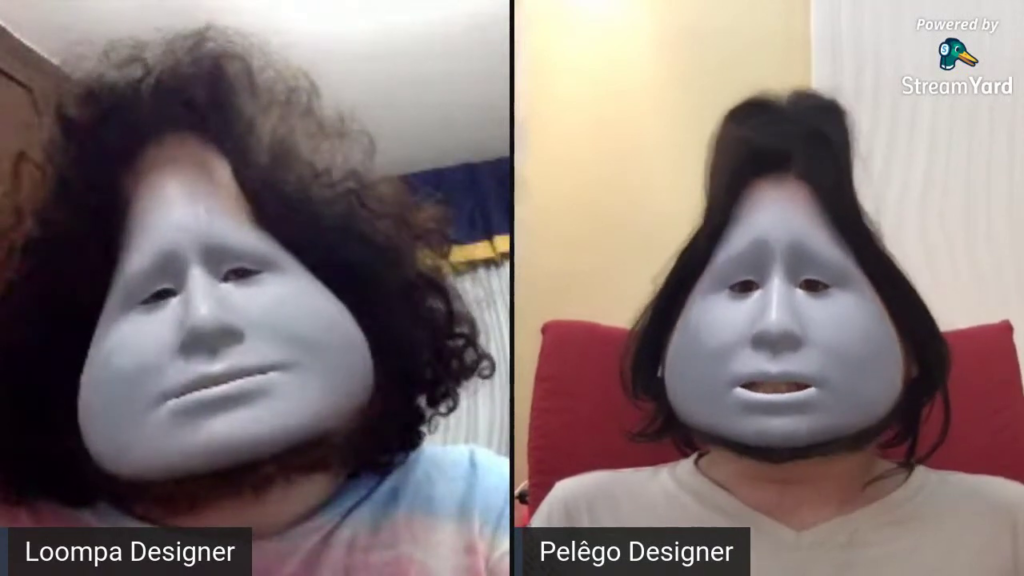
Later, the platform offers the lumpen-designer the opportunity to participate in a satisfaction survey. Lumpen accepts and gives a score of zero. The survey results are displayed to the meta-designer, the platform designer, who is surprised. The meta-designer asks to contact the lumpen-designer to verify the reason for his dissatisfaction. A dialogue takes place between designers, but with significant social differences.

Meta-designer is interested in understanding why lumpen-designer gave such a low score. He listen to the story of the precarious worker and, as a response, suggests he does not see himself as a worker but as a user who is having fun using the platform. The lumpen-designer doesn’t think it is suitable to be called a user because he is a designer. However, the meta-designer says that the Fantastic Design Factory is not a work but a creative platform. The lumpen-designer says that the platform is unethical and suggests that an ethical review be done on the platform. The meta-designer gets an idea for a new platform service and ends the user interview.
The meta-designer adjusts the platform and adds the ethical review service. The platform invites the lumpen-designer to do the ethical review job for the Happy Cow company. Still, he refuses to do so because he thinks he should be paid first for providing new productive insights to the platform. The platform ignores his claims and passes the job to the scab-designer, who is happy to provide cheap services in design ethics. He says that it is ok to praise the ethics of any design that pays him to do so. The platform cuts off the lumpen-designer and the job is delivered to the scab-designer.
